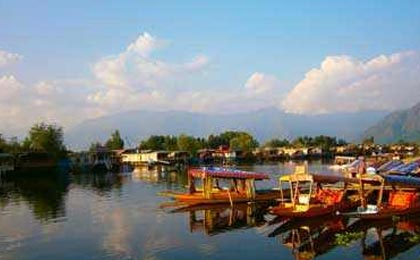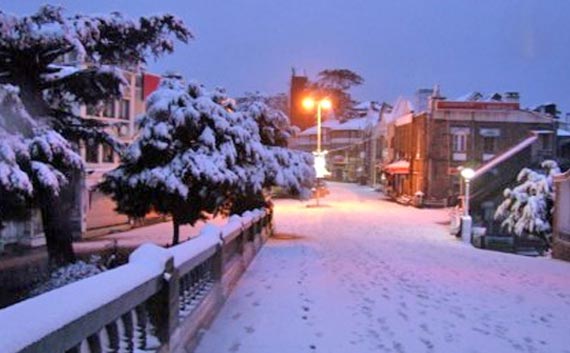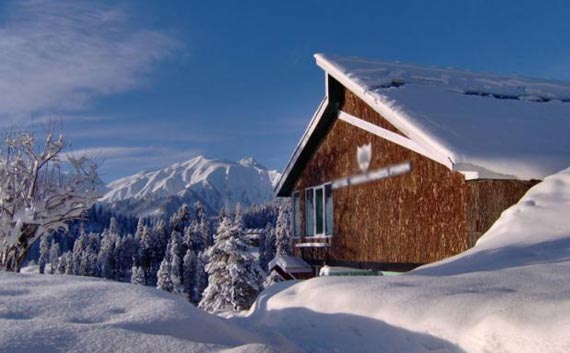- Location : Delhi - Srinagar - Gulmarg - Sonamarg - Kargil - Alchi – Leh - Pangong Lake - Leh– Delhi
Book Now
Kashmir & Leh
This Kashmir and Ladakh tour takes you to the most incredible heights and exotic locations of India like Srinagar, Gulmarg, Sonamarg, Kargil, Leh that will make you remember the trip for years to come. Ladakh is a land of high passes, exotic landscapes and stunning beauty. You will see some of the most prominent architectural masterpieces of Buddhist culture and tradition.
ITINERARY
Day 1: Delhi
Arrival to Delhi. Our representative will meet you at the airport. Check in to the hotel. Sightseeing in Delhi.
New Delhi, the capital of India, is a bustling metropolis that has an amazing mix of modernisation and carefully preserved antiquity. Sprawled over the west bank of the river Yamuna, it is one of the fastest growing cities in India. New Delhi was built by a British architect Edward Lutyens in 1912 as the new capital of the British Raj. The Victorian architecture now intermingles with the city's high rise buildings. Concrete flyovers built to ease the growing traffic are interspersed with well laid gardens, Mughal tombs, forts and monuments.
Day 2: Delhi - Srinagar
Arrival to Srinagar. Our representative will meet you at the airport. Check in to the Houseboat. Sightseeing in Srinagar.
Srinagar - “Paradise on Earth”, located in the heart of the Kashmir valley is the summer state capital of Jammu and Kashmir. This spectacular hill station is at an altitude of 1,730 m above sea level. The word Srinagar literally means “the city of wealth”. As the summer capital of Jammu and Kashmir, the city is renowned for its traditional handicrafts, lakes, gardens and houseboats. It's an ideal destination that can be visited throughout the year. This hill station is visited by travellers from outside India as well. A variety of tourist attractions makes the place worth visiting many times.
The Houseboats are generally made from local cedar-wood and measure 24–38 metres in length and 3–6 metres in width and are graded in a similar fashion to hotels according to level of comfort. Many of them have lavishly furnished rooms, with verandas and a terrace to serve as a sun-deck or to serve evening cocktails.After lunch take a Shikara ride on Dal Lake.
The scenery around is breathtaking and tempting that might make you erupt in joy. You can also shop while taking a Shikara ride visiting floating markets. It is the centre of tourist activity in Srinagar and the best way to observe the surrounding flora and fauna and spot the different kinds of birds and aquatic plants and animals that form a part of the eco system.
Day 3: Srinagar – Gulmarg (56 km – 1.5 h)- Srinagar
Full day trip to Gulmarg - “Meadow of Flowers”, 2730 m. above sea level. Gulmarg has one of the best Ski slopes in the world and highest golf course of the world with 18 holes. One can also have the view of Nanga Parbhat if weather permits. The views on the way toGulmarg are fascinating. Enjoy sledge riding on snow. Chair Lifts for mountain ride are also available. Return back to Srinagar.
Day 4: Srinagar
Visit Mughal Gardens: NishatBagh “The garden of pleasure” built by Asif Khan - brother in law of Jehangir in 1632 AD. And Shalimar Bagh “Abode of love” built by Jehangir for his wife Empress Noor Jehan. Asia's largest Tulip Garden on the banks of Dal lake - the 15-hectare garden in the foothills of Zabarwan Range. All the gardens are situated on the bank of Dal Lake with the Zabarwan Mountains in the background.
JamaMasjid is among the oldest mosques in Srinagar and displays a monument of Islamic architecture. It was built in 1674 with four spires tower, 370 pillars, prayer halls, etc. Each pillar is made from a single piece of deodar trunk. The temple was destroyed and restored many times. It is also known as the Friday Mosque.
Hazratbal Mosque located on the banks of Dal Lake, the Mosque is made from white marble and a fusion of Kashmiri and Mughal styles of architecture can be noticed in its construction. The Mosque is also called Dargah Sharif, Asar-e-Sharif, and Madinat-us-Sani. There is a shrine in the Mosque which is believed to contain a relic-a hair of the Islamic Prophet Muhammad.
The Rozabal Shrine in Srinagar is one of the biggest mysteries of the world. It contains the tomb of YuzaAsaf who is supposed to be none other than Jesus Christ! According to traditions dating 1st century AD and several ancient works in Persian, Arabic and Sanskrit Cultures, Jesus survived the crucifixion and migrated to live in Kashmir. There are tantalizing architectural, inscriptional, anthropological, and archeological document evidences which strongly indicate this. This hypothesis makes the Rozabal Shrine a unique place in the world where all religions seem to unite, conveying the message of love, peace and harmony.
“Throne of Solomon” is a large ancient temple situated on the top of a hillock near the Dal Lake in Srinagar. The temple was built by Jalauka, the son of the great Emperor Ashoka, about 200 B.C. It was renamed Sankarachariya by the Hindu Maharaja in 1848. AdiShankaracharya (788-820AC) lived, meditated and did Tapas (penance) here to review Hinduism which had been eclipsed by Buddhism. He worshipped the Shiva Lingam, which is still found in the Sanctum Sanctorum. It is believed , that AdiShankaracharya "attained spiritual knowledge" at this particular place and after that went out and formed the four Hindu schools of Advaita, the philosophy of non-dualism.
Overnight stay on Houseboat.
Day 5: Srinagar – Sonamarg - Kargil (204 km – 5 h)
In the morning after breakfast leave for Kargil, on the way visiting Sonamarg, known as “Meadow of Gold”, Drass Village, enroute have a magnificent view of Kargil Famous Peaks - Tiger, Tololing.
Tiger Hill is overlooking the Drass Valley on Srinagar-Leh Highway, and is also known as “Point 5353”. It is the highest peak in this area (16500 feet) and the most dominating feature in Drass Valley. In the local dialect Drass means “Hell”. It is at a height of 10990 ft. The surrounding mountain ridges range from 16000 feet to 21000 feet. It has become famous as the second coldest inhabited place in the world . Winter temperature is sometimes comes down to less than minus 60 degrees.ReachKargil by evening.Overnight in hotel.
Day 6: Kargil - Alchi (160 km – 4 h)
In the morning after breakfast leave for Alchi, enroute visit Mulbek
Mulbekh Monastery or MulbekhGompa is consisting of two gompas - Drukpa and Gelugpa. The double gompas are dramatically situated at the very top of a crag (656 ft) above the road. They were connected with the nearby palace of Rajah Kalon of Mulbekh below. They may be reached by a steep footpath winding up from behind. The altitude of the town at the foot of the crag is 10,839 ft., which makes the altitude of the gompas 11,495 ft.
Then drive to Lamayuru - the oldest Monastery of Ladakh, and have a magnificent view of spectacular “Moon Landscape”. Lamayuru monastery was founded in the 10th century. This Gompa is located amidst the massive mountains. The spectacular setting of this gompa and its renowned collection of carpets, thangkas and frescoes has been attracting many people over a long time
Reach Alchi by afternoon, spend rest of the day at leisure.Overnight in camp.
Day 7: Alchi to Leh (70 km – 2 h)
After Breakfast leave for Leh, enroute visit Alchi, Likir Monastery, Magnetic Hill, Pathar Sahib Gurudwara and Hall of Fame.
LikirMonastery was founded in the 14th century and belongs to the Gelugpa sect - the "Yellow Hat Sect" of Tibetan Buddhism . The brother of His Holiness The Dalai Lama is head monk here. Monastery has ancient Buddha statues, old books containing important Buddhist sutras, gold and silver stupas adorned with chunks of semi-precious jewels and Impressive 25-foot statue of Sakyamuni sitting on a roof is more from the distance.
The Magnetic Hill supposedly has magnetic properties which attracts metallic objects, making vehicles move up at a speed of about 20 kmph with their engines off.
Gurdwara Sahib is where Guru Nanak Sahib stayed in 1517 during his second journey on return from Sumer Mountain. He travelled along the route from Nepal, Sikkim, Tibet and Yarkand to Leh and after discourses with local Budhists, came to be revered as Nanak Lama.
The Hall of Fame is a museum constructed and maintained by the Indian army in memory of the brave soldiers who lost their lives in the Indo-Pak wars.
Evening time free at leisure.Overnight in hotel.
Day 8: Leh – Pangong Lake ( 160 km - 4 h )– Leh
After breakfast leave for Pangong Lake (14,500 ft), through Changla Pass (17,350 ft), the third highest motorable road in the world.
Pangong Lake is the highest salt water Lake in the World, shared by two countries - India and China.
Drive back to Leh by the same route.
Day 9: Leh
In the morning leave for half day sightseeing tour toThikseyGompa and Shey Palace.
Thiksey Monastery or Gompa was built in 1430 AD and belongs to Gelukpa Order of Buddhism. ThikseyGompa hosts the Gustor ritual (sacred mask dance), organized from the 17th to 19th day of the ninth month of the Tibetan calendar. ThikseyGompa monastery is one of the most beautiful monasteries of Ladakh, it has a beautiful 30 m high gold-plated statue of Maitreya Buddha - the Buddha of the future.
The Shey Palace was built by the king DeledanNagmyal in the 16 century AD and is a largest victory stupa in Leh, the top of which is made of pure gold. The monastery enshrines the Du Khang with an almost 10 meter high gilder copper statue of Lord Buddha.TheShey palace was the abode of the royal family till 1834 AD, when they moved to the Stok palace.
Back to hotel by lunch time and spend time at leisure by exploring Leh local town
Day 10: Leh
After breakfast full day sightseeing of Spituk, Shankar Gompa, Shanti stupa.
Spituk - 8 Kms from Leh - stands majestically atop a hillock overlooking the Indus valley for miles. Many icons and fine "Tangkhas" are to be found in this 15th century monastery.
Shankar Gompa is associated with SpitukGompa and serves as the residence of the Head Lama.
Shanti stupa, built by Japanese, is visible from most of the town, this new stupa was officially opened in 1985.
Day 11: Leh
After breakfast full day sightseeing.
Stok Palace was built in 17th century by King SenggeNamgyal. In 1842, the Namgyals made it their permanent residence. The Palace is a four-story structure - on top floors are the Royal family residence, the lower floors are now converted into a museum having rich collections of royal jewels, ornaments, ceremonial dresses , crowns and centuries-old pieces of royal jewellery.
PhyangMonastery is 17 Kms from Leh, built by TashiNamgyal in 16th century A.D. and belongs to the Red Cap Sect of Buddhists.
Day 12: Leh – Delhi ( 1.5 h flight)
After breakfast transfer to airport and departure to Delhi.


